We may receive a commission when you use our affiliate links. However, this does not impact our recommendations.
I’m a “behind-the-scenes” junkie – any chance I get to see the inner workings of manufacturing or industrial spaces, I jump at the opportunity. So, I was especially thrilled to take a tour of M. Bohlke Veneer, a lumberyard and veneer mill in nearby Fairfield, Ohio (a 15-minute drive from the PopWood shop) last week with Christopher Schwarz, Megan Fitzpatrick and Andy Brownell.
M. Bohlke Veneer was founded in 1966 by Manfred Bohlke, an immigrant from Germany. The company has since grown into a massive multi-warehouse operation, where they mill, cook, slice and splice veneer. They have also recently constructed a warehouse across the street to house their growing inventory of imported and domestic lumber and massive live-edge slabs.
We got a tour from Nick Bohlke, the president of manufacturing and grandson of Manfred (who still owns the company, and was taking a group of German clients on a tour of the facility while we were there). I’m a big wood nerd – the kind that enjoys knowing the genus and species of the wood I’m using, where it’s from, what the leaves look like, how it behaves, etc. Nick’s knowledge was first-class – and he’s only been at the business since 2012, which speaks to his passion and knowledge of their products.
Another thing I loved finding out: The company has no minimum order, and is working on building up a showroom/readily accessible yard for the little guy (like me, and maybe you). If you’re a veneer fan (or looking to get started, maybe with something like our videos on veneering from Jonathan Benson) this place is a veritable veneer Mecca.
With that little background, I’ll let the photos and captions tell the rest of the story. I should say that I’m writing this post of my own accord (as we always do, just like our tool reviews, etc.) – I was so floored by the wood and operation we saw that I wanted to share it with our readers. I also was thrilled to see that there are still manufacturers like this in the neighborhood, and encourage you to take the opportunity to get these behind-the-scenes type of tours when you get the chance. Thanks again to Nick for the tour, and Andy for helping set it up!
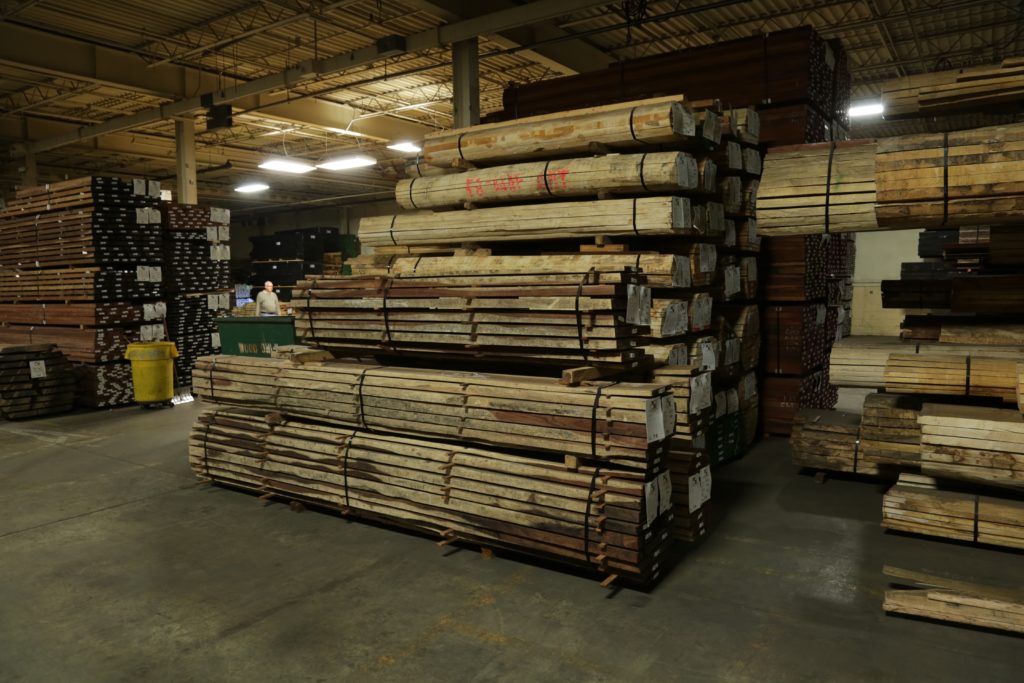
Our first stop at M. Bohlke Veneer was nothing to do with veneer – for some time, the company has been building up a significant lumberyard. Initially, it stocked dried solid lumber to complement the veneers they produced – when a client ordered bog oak veneer, he also wanted a small amount of solid bog oak lumber for trim, edging and detail work. That led Bohlke to build an inventory, which they’ve now opened up as a completely independent warehouse.

Speaking of bog oak – here are two massive (50″ diameter or so) bog oak “boules” (whole sawn logs) that they’ve milled into 4/4 and 8/4 flitches.

Lest you think those bog oak boules are the exception – the 75,000-square-foot warehouse is stocked full of drool-worthy lumber. Here’s a huge pile of genuine Honduran mahogany, massive in size and quantity.
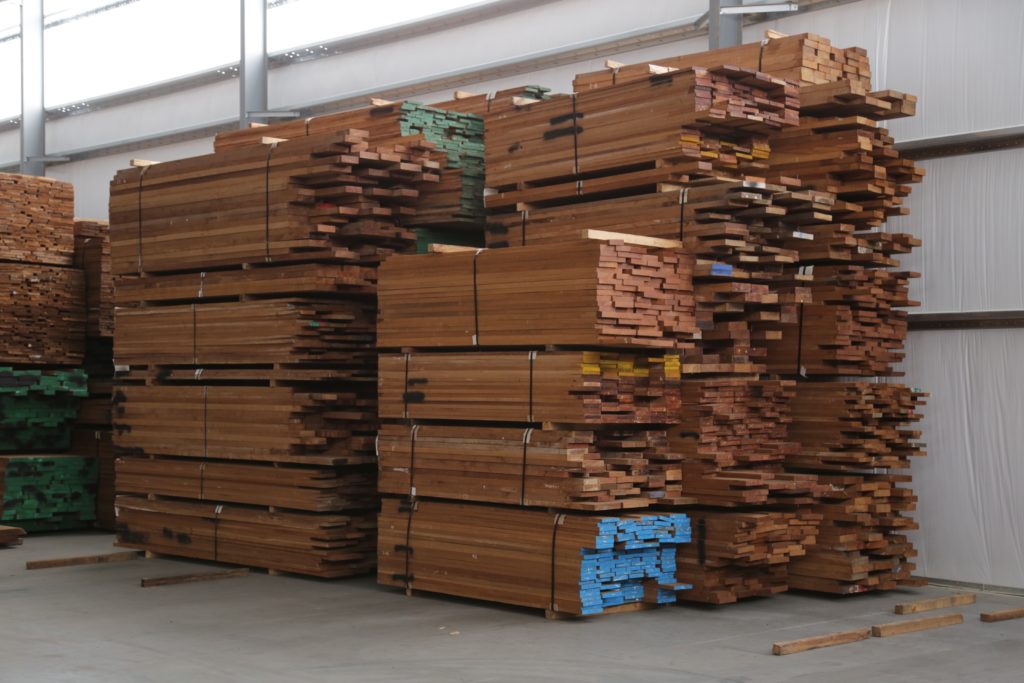
Do you like teak? Yeah, Bohlke has some. This is all Burmese teak, in every size and thickness, to boot. But lest you think this is a remarkable bit of lumber…
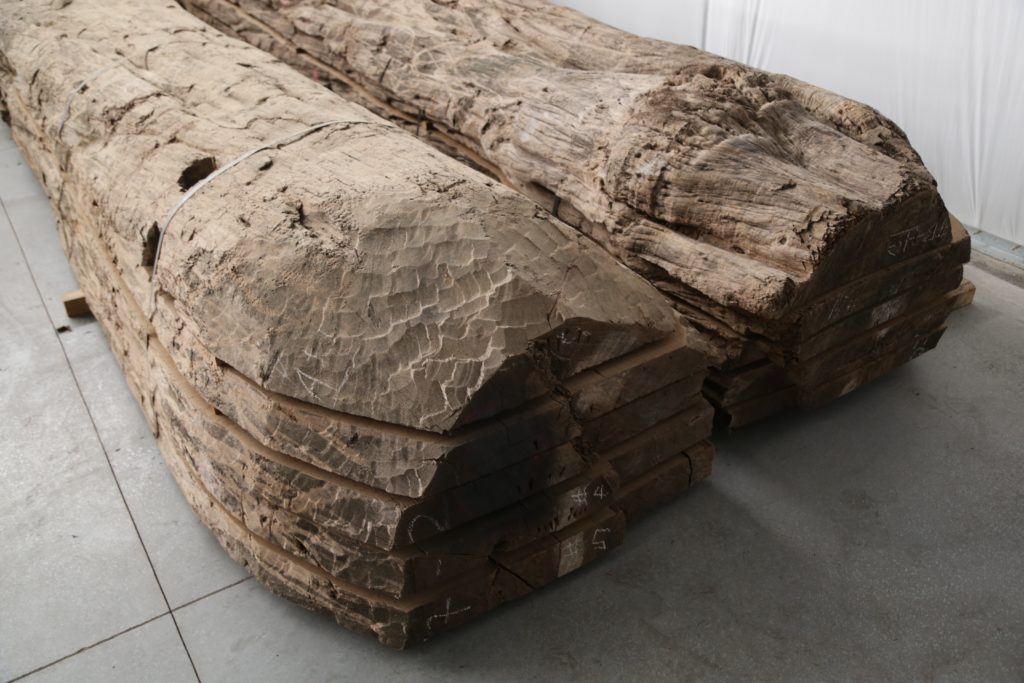
… here’s the teak that bowled me over. This is a massive single teak log that was felled by hand – well sort of. The massive mortise on the top of the left log was cut so that ropes could be rigged through the tree and tied to elephants. Yes, the big grey kind. And to head off your question (it was mine, too) – Bohlke goes through green-certification and FSC certification on all of its lumber.

And, lest you should think everything at the yard is a question of scale, the quality and selection is pretty incredible. Here’s a huge (6′ tall or so) bastogne walnut burl, flitched out and stored in series. The yard does an incredible job of keeping everything organized and in series, which is gold to a picky lumber buyer like me – you can be sure to get all the wood you need for a product from a single tree, and not worry about color or grain matching.
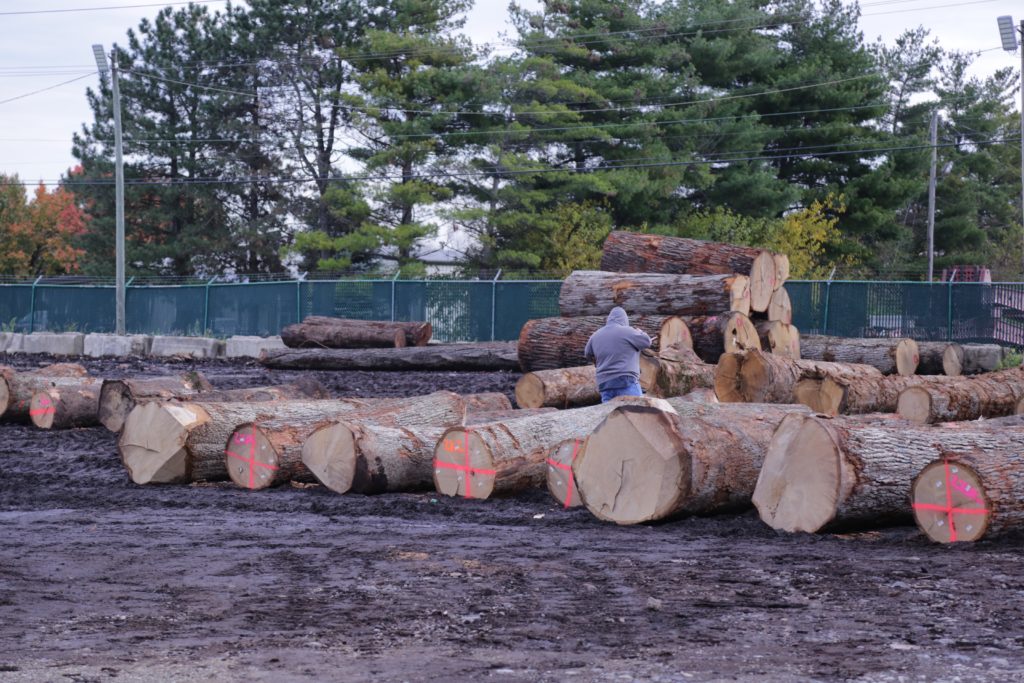
After the lumber tour, we started on a tour of the veneer mill. Here’s where every slice of veneer starts – in the log yard. Bohlke takes an average of 10 truckloads of logs a day to keep the operation going. Each log is first graded and sawn in the round, cutting out defects like branches and looking for the best way to use each log.
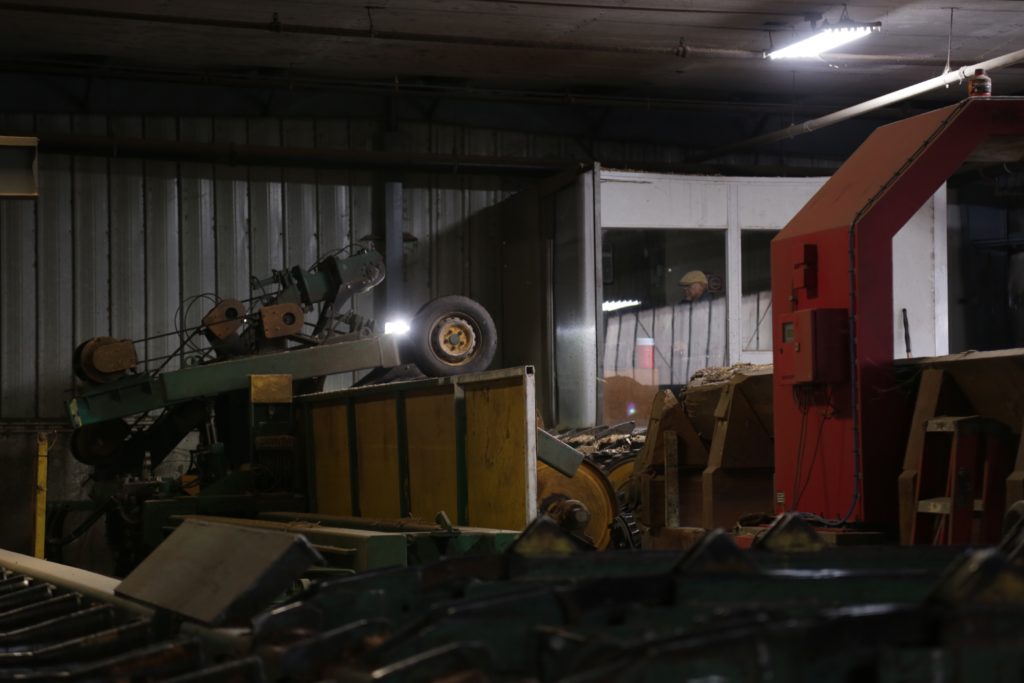
After being graded, the logs are sent via conveyor to this machine – a huge debarker that also cuts the logs to rough length.
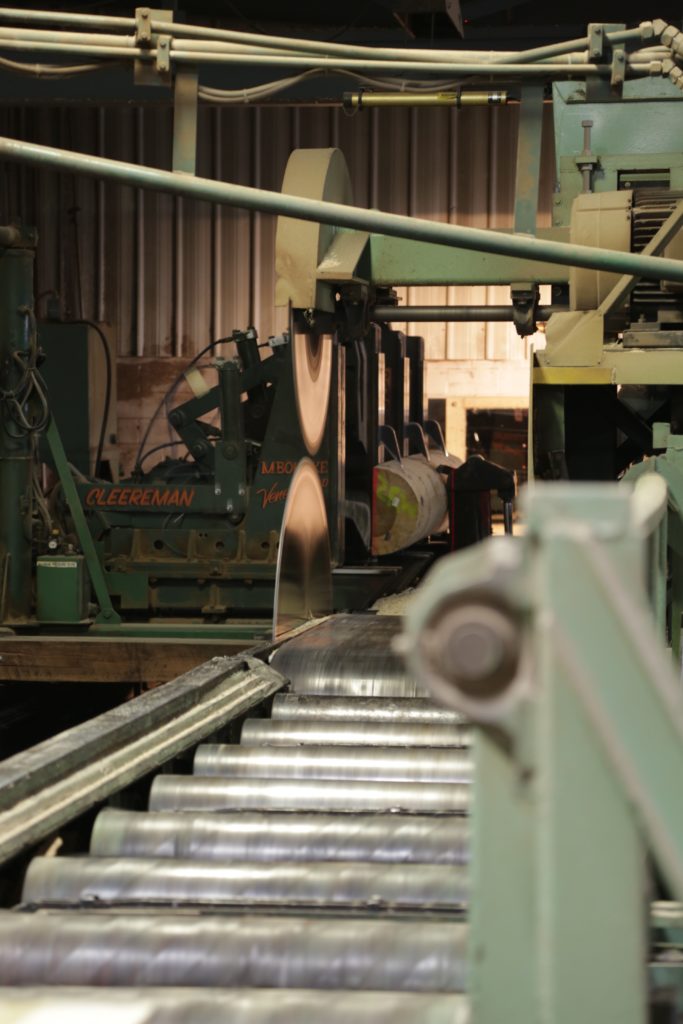
The roughly debarked and sawn-to-length logs are then milled by this massive circular sawmill. Depending on which type veneer machine they’re heading to, they’ll be rift, quarter or flat sawn, and prepped for that machine.
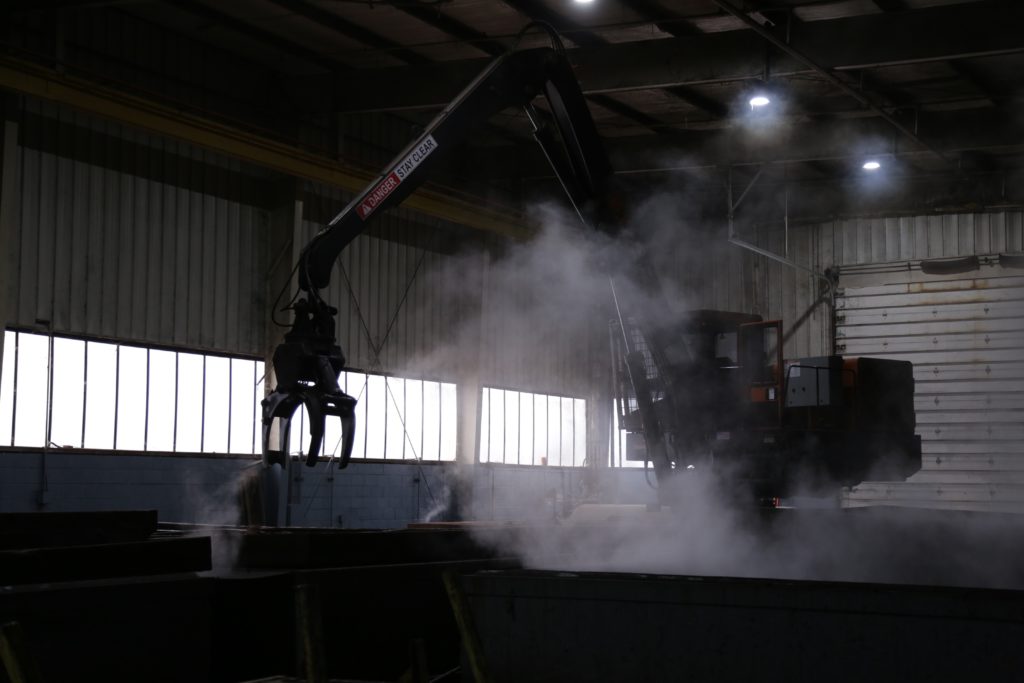
Before the veneer can be cut from the log, the logs are cooked – or maybe boiled is a better way to put it. Each species and type of veneering operation has a different time. Dense tropical woods sit in high heat for days, whereas less dense woods such as pine and oak soak at lower temperatures for a shorter period. These “recipes” take years to develop, and involve some serious wood technology knowledge. A part of the process I didn’t capture is the prep that happens right before this – the logs are surfaced and have their outsides sanded smooth by a massive belt sander, which is required to get a good hold in the machines and to yield the best quality (and quantity) of veneer.
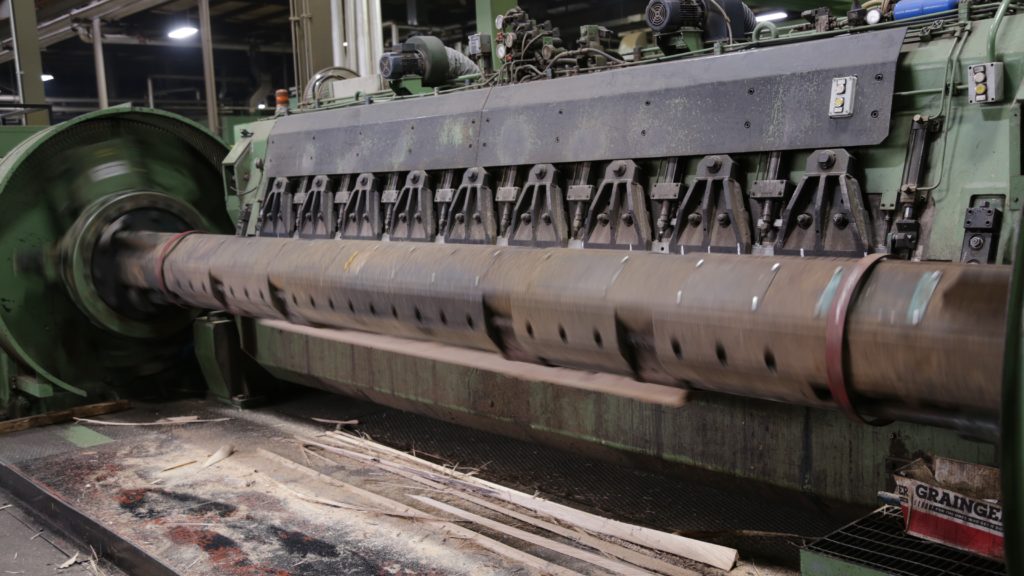
Here’s one type of veneer machine – a rotary cutter. The spinning shaft in the middle has a quarter-log attached, and spins past a razor-sharp blade, which slowly slices 1/30″ to 1/50″ veneers off the log.
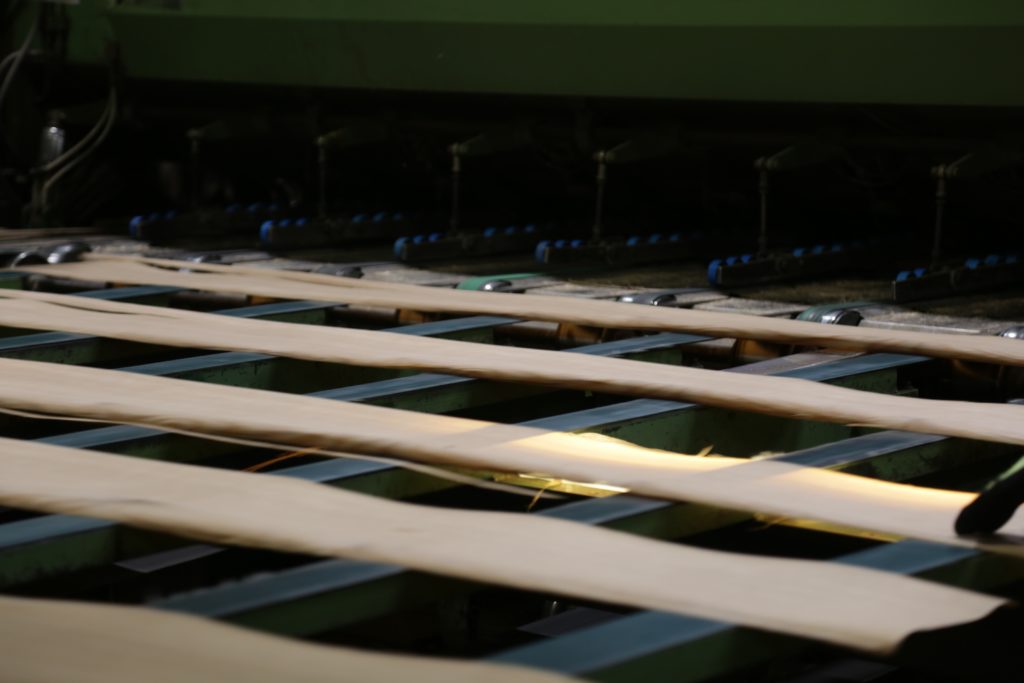
The parade of veneer out of the rotary cutter is pretty astonishing. Here are some slim strips of oak flying down the belts, to be pressed, then trimmed, bundled and further processed across the factory.
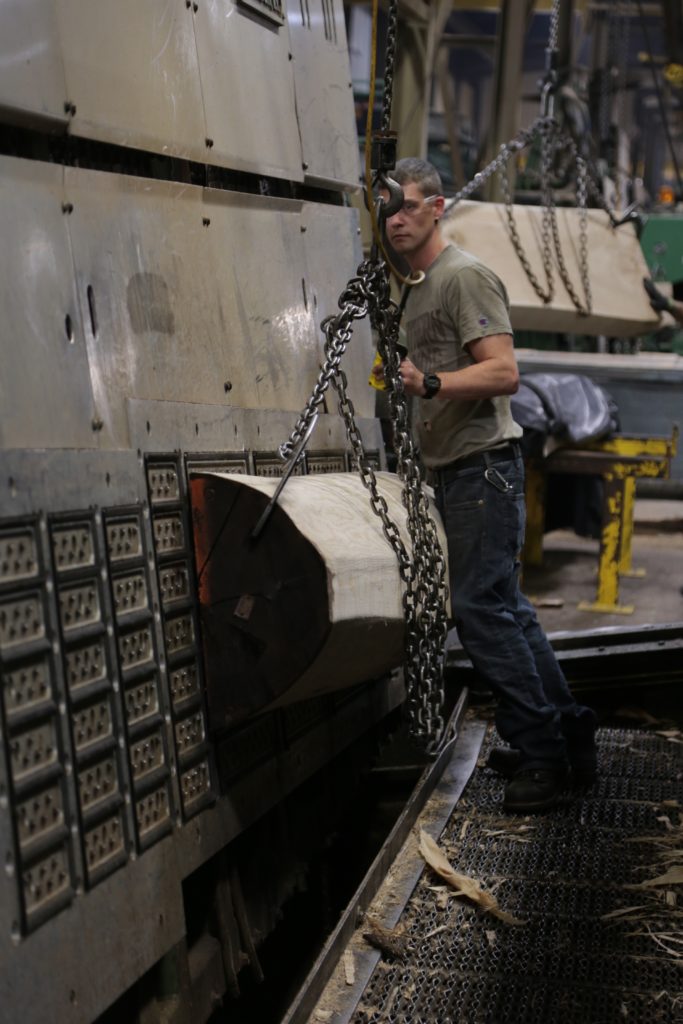
Here’s the veneer machine I was most excited to see – a vertical veneer slicer. These machines are amazing – this half-log is loaded onto the platten (and held in place by a vacuum!), and is then moved up and down past a slowly advancing blade, which slices flitches of veneer from the log. Check out this short video below of the slicer in action (sorry for the vertical video faux pas).
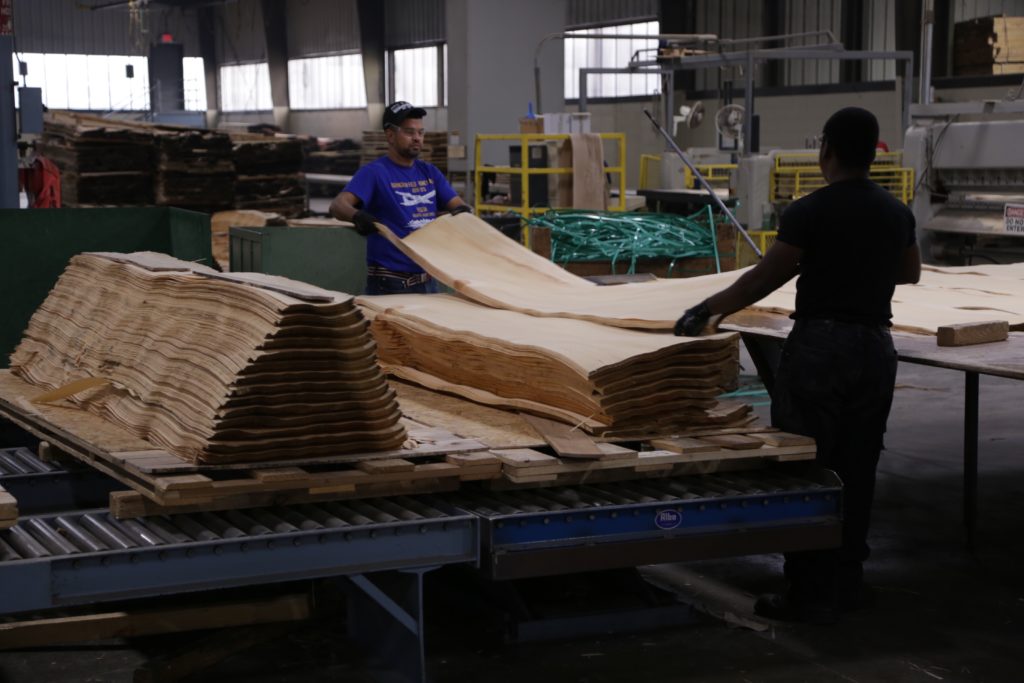
Regardless of how the veneer is sliced, one thing is a constant at the facility – the incredible organization and digital inventorying. The plant has more than 200 employees, and every bundle of veneer is carefully tracked by an inventory system. Even more impressively, each bundle is from the same tree, and they’re kept in sequence. Once again – no worrying about color or grain matching, when you can buy all of the veneer from a single tree.
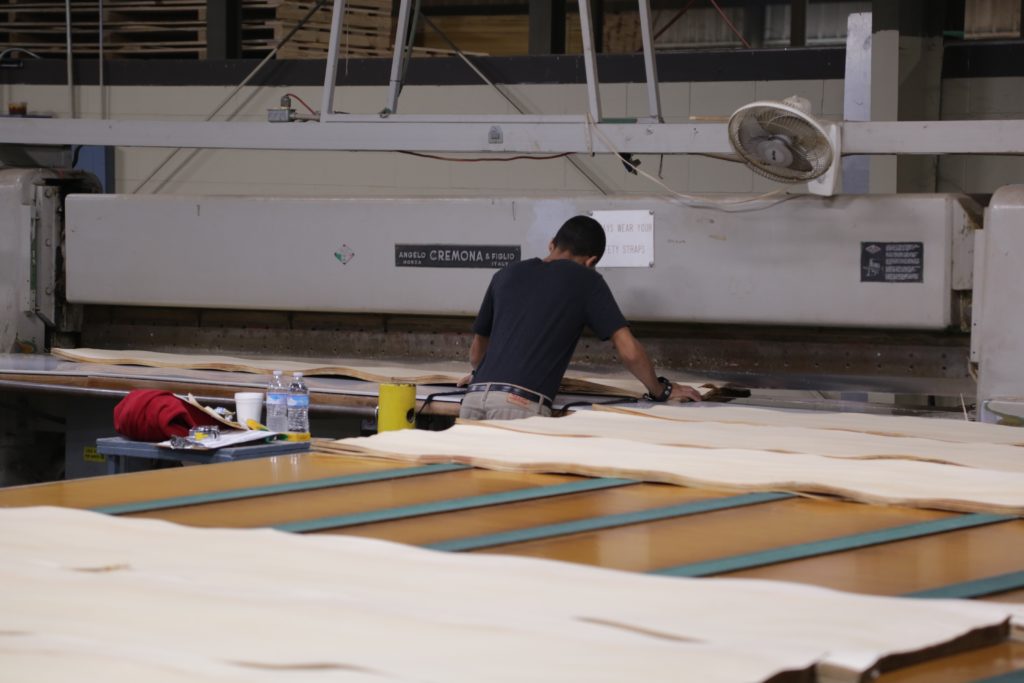
Part of the processing work, after the veneer is sliced and pressed, is the cutting and trimming work. This massive Cremona machine cuts the veneer to width. Note the chains on the worker – these restrict the movement of the worker’s hands, so that he can’t possibly get them underneath the massive blades. The employee must be signed in and out of the chains, for every break or shift, by a manager. There’s no joking around working next to these behemoth cutters.
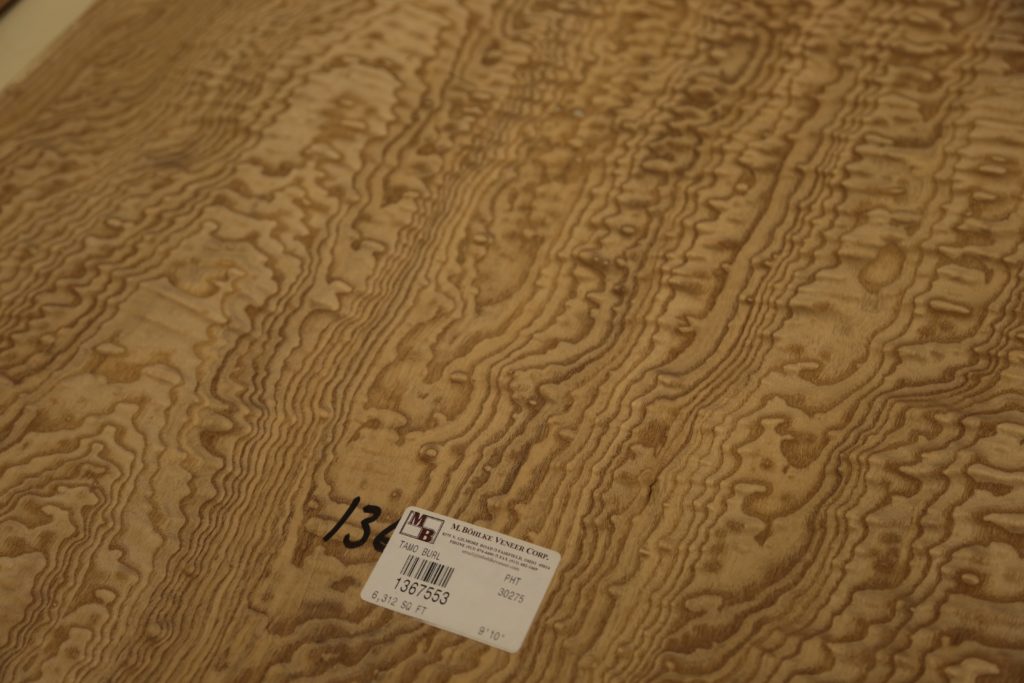
After being trimmed (and sometimes stiched or further processed) the veneer is ready for purchase. Here is some stunning flatsawn Tamo ash. You can see the inventory tag here, as well – every bundle gets one, and every stage of the processing, handling and sales are monitored and tracked through these little tags.
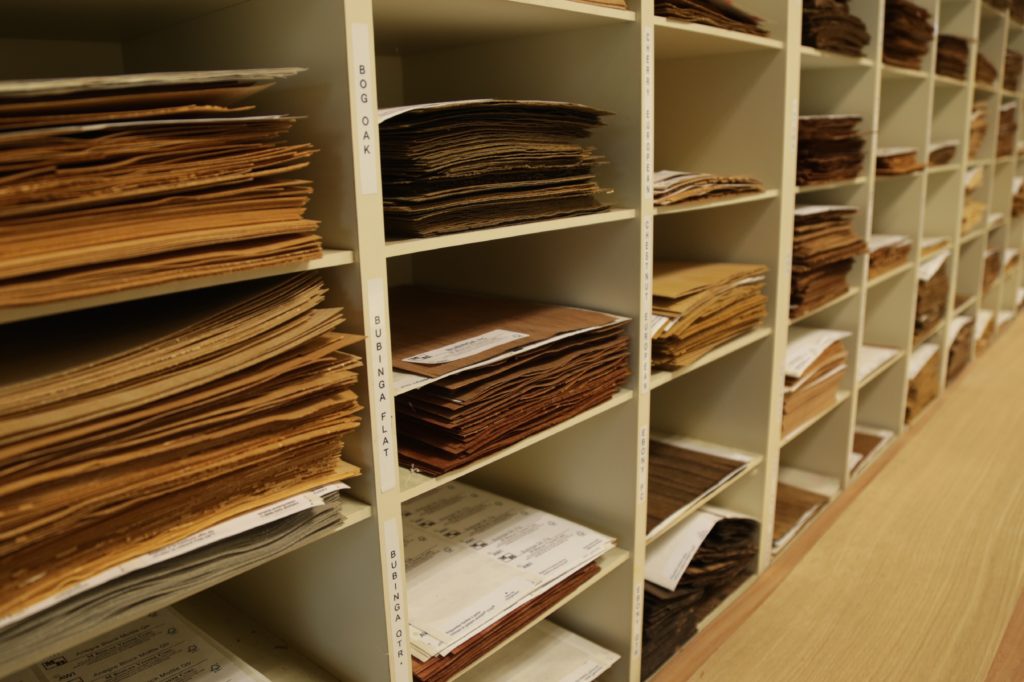
Just as the inventory is carefully tracked, the showroom of veneer is equally well organized. Bohlke have hundreds of varieties of veneer, and even several dyed or modified veneers. An ebonized ash veneer looks quite a bit like bog oak, and can save quite a few dollars when looking at a bottom line for outfitting an architectural space in high-quality veneer.
Here are some supplies and tools we find essential in our everyday work around the shop. We may receive a commission from sales referred by our links; however, we have carefully selected these products for their usefulness and quality.








